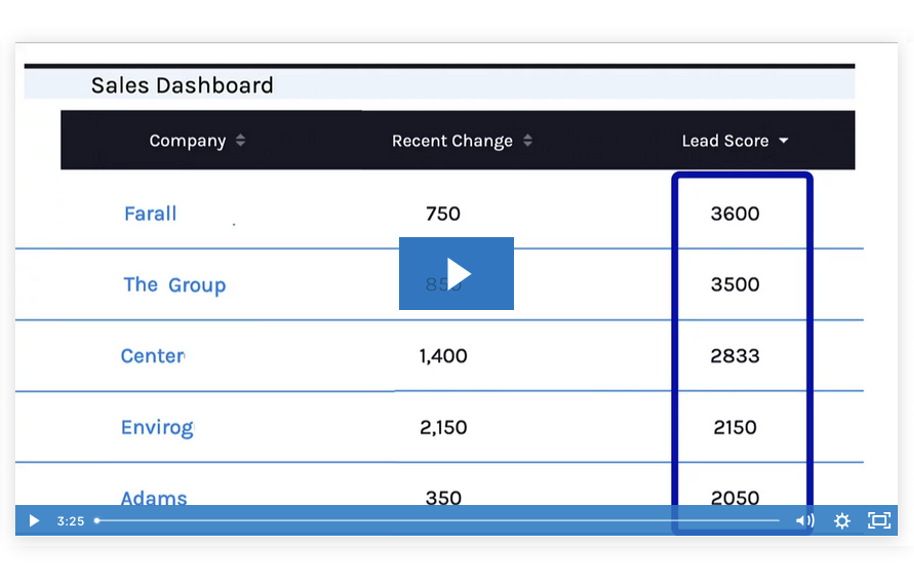
What are B2B Demand Generation Best Practices?
A strong B2B demand generation program encompasses a range of practices that can help businesses effectively attract and engage potential customers. So what are B2B Demand Generation Best Practices?
A robust demand generation program focuses on increasing brand visibility and recognition within the target market. By consistently delivering relevant and valuable content, businesses can raise awareness of their brand, products, or services, establish their authority in the marketplace, and generate interest among potential customers.
B2B Demand Generation Best Practices to Consider
One – Clearly define your target audience: Develop detailed buyer personas and clearly identify the characteristics, pain points, and needs of your ideal customers. This understanding will enable you to tailor your demand generation efforts to resonate with your target audience effectively.
Two – Align marketing and sales teams: Foster collaboration and alignment between marketing and sales teams. Establish clear communication channels and shared goals to ensure both teams work together towards generating and converting leads.
Three – Develop a compelling value proposition: Clearly articulate the unique value and benefits your products or services offer to potential customers. Your value proposition should address the specific pain points and challenges faced by your target audience, highlighting how your offerings provide solutions and deliver measurable results.
Four – Create targeted and personalized content: Develop high-quality content that speaks directly to your target audience. Tailor your content to address their pain points, answer their questions, and provide valuable insights. Personalize your messaging and offer content in various formats (such as blogs, videos, white papers, and webinars) to cater to different preferences.
Five – Optimize your website for lead generation and pre-sales education: Ensure your website is user-friendly, visually appealing, and optimized for lead capture. Use clear calls-to-action (CTAs) on strategic pages, offer valuable gated content, and implement lead capture forms that are easy to fill out. Optimize your website for search engines to increase organic visibility and attract relevant traffic. But don’t do any of this at the expense of making it easy for the buyer to understand what problems you solve and how you solve them. Make it easy for the buyer that wants to consider your solution to understand what you do. Videos are a great way to do this.
How Digital Demand Center Can Fill Your Sales Funnel
(watch time – six minutes)
Six – Leverage social media platforms: Utilize social media channels where your target audience is active. Share relevant content, engage in industry discussions, and build relationships with potential customers. Leverage social media advertising to target specific audiences and amplify your reach.
Seven – Implement marketing automation: Utilize marketing automation tools to streamline and automate your demand generation efforts. Automate email campaigns, lead nurturing workflows, and personalized communications based on lead behavior and engagement. This helps to scale your efforts, maintain consistent communication, and deliver relevant content to leads at different stages of the buyer’s journey.
Eight – Score you leads: Marketing automation allows you to educate buyers and stay top of mind. But how do you know when a buyer is ready to buy – Lead Scoring. If you are not using lead scoring as part of your marketing automation you are losing 80% of its value. To learn more about lead scoring watch the video below and read B2B Lead Scoring for More Effective B2B Demand Generation.
How Lead Scoring Works
(watch time – 3 minutes)
Nine – Measure and analyze performance: Continuously track and measure the performance of your demand generation initiatives. Monitor key metrics such as website traffic, conversions, email open rates, click-through rates, and lead-to-customer conversion rates. Use analytics tools to gain insights and optimize your strategies based on data-driven decisions.
Nurture leads effectively: Develop a lead nurturing strategy that includes personalized and timely communication with leads. Provide relevant content, address their specific needs, and guide them through the buying process. Use marketing automation tools to deliver targeted messages and offers based on lead behavior and preferences.
Ten – Test and iterate: Continuously test different approaches, messaging, and channels to refine your demand generation strategies. A/B test your campaigns, landing pages, and CTAs to optimize performance. Gather feedback from your audience and learn from your results to improve your overall approach.
By implementing these best practices, businesses can enhance their B2B demand generation efforts, attract qualified leads, and drive conversion, ultimately contributing to business growth and success.




